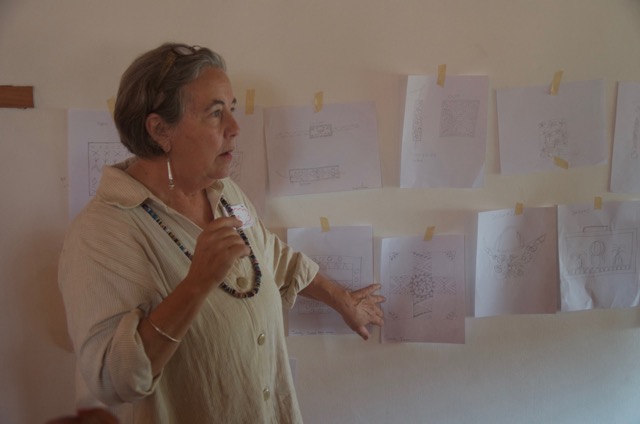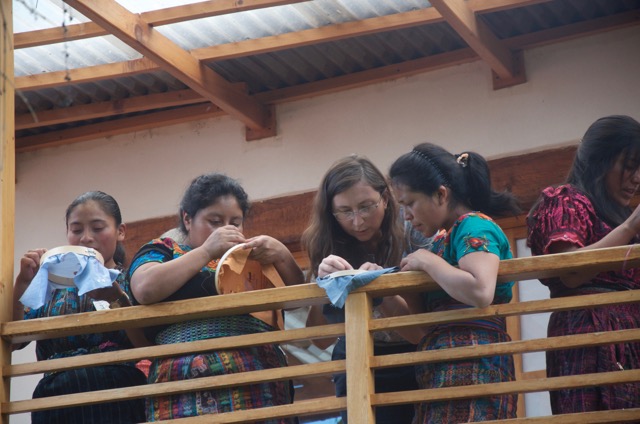
Second Report: Embroidery Workshop
Posted by Mary Anne Wise on 24th Oct 2016
The following is an insiders accounting of the recent Embroidery Workshop in Guatemala as told by the teacher, Mary Anne Wise, Founder of Cultural Cloth.

The primary objective of this workshop is to coalesce as a group. Therefore, to start with, we talk about what makes a good teacher, what makes a good student, what are our mutual responsibilities. Then, together we create a list of rules for the class.
We followed the rules we created. During a design presentation, my co-presenter Reyna, had to ask the women to surrender their cell phones and to place them in a basket to be retrieved during lunch time. “No cellular” was on the list of rules but several women’s phones interrupted the class and now it’s time to assert the rules. According to the look on their faces, taking away their phones is a bit like cutting off a hand. I suspect we will only have to take away the phones once.
The women have brought along their embroidery work in progress to show the group. What’s the name of that stitch, I ask, and even though we’ve identified a total of 8 or 9 various stitches across a dozen examples, only 2 or 3 stitches are known by name. I talk about the importance of naming stitches & drawing them in your notebooks but the significance falls on deaf ears.
Next, Sarah teaches a few stitches. Then the energy reenters the room as soon as the women start working with their hands and talking and laughing and connecting.

Sarah talks about her work in Madagascar and how none of the Malagasy women had embroidered before participating in her project, how none of them can read, and how none of them have access to making money.
She’s got a short video about the women of Stitch St Luce, what their landscape is like and what their homes are like. Sarah shows their embroidery work, too. Reyna translates the folktale depicted in a small (14x14”) and finely detailed embroidery. The Mayan women listen, captivated.
We next discuss the stitched homework. Sarah examines their stitches and, practices the critique process, provides feedback on the stitches contained w/in several hoops. Someone’s phone starts to ring and almost in unison the other students groan, wag their finger at the offending student. No one wants their phone taken away again. Throughout the rest of the day, there’s not one phone that rings.

Still feeling a bit of distance from some of the experienced students, Sarah decides it’s time to win them over. She’s made 7 or 8 lines of various stitches across her hoop and: none of the women have seen these stitches before. We’ve got time to teach 2 maybe 3 stitches and the advanced students immediately choose the most complicated stitches. I suspect the more advanced students are beginning to ‘see’ there just might be something worthwhile going on here…

